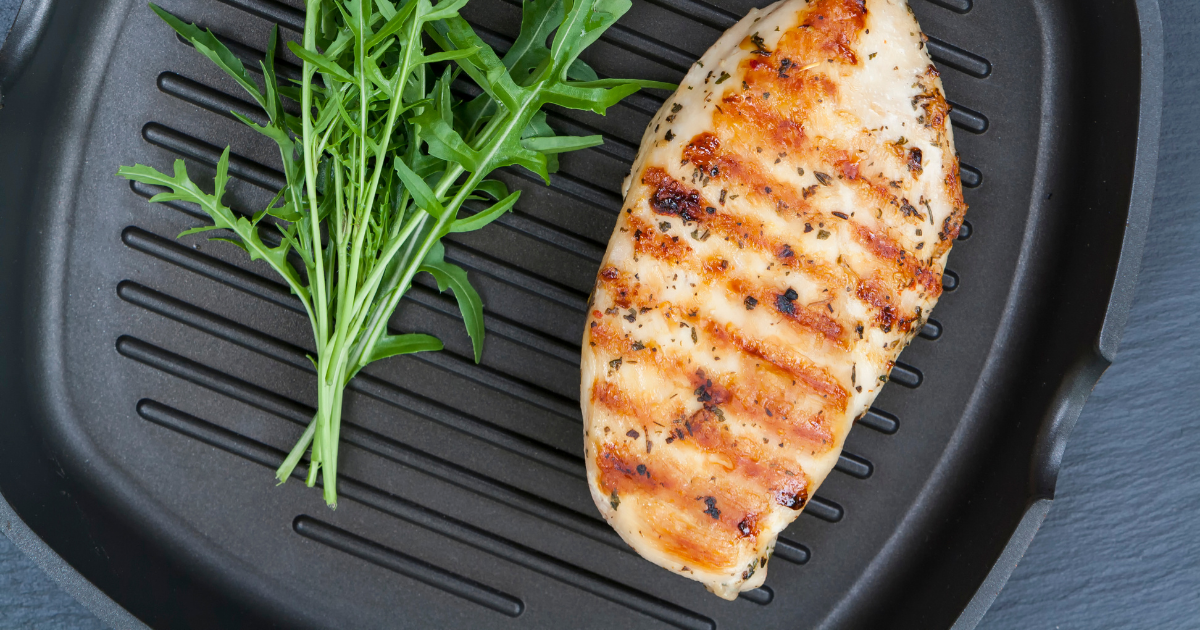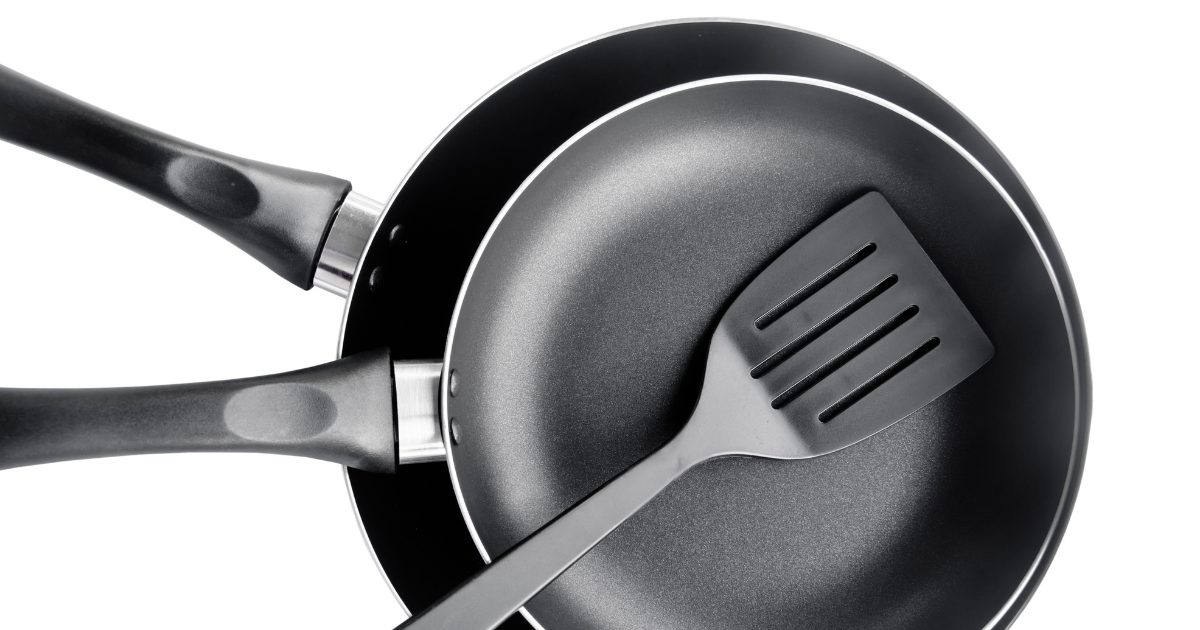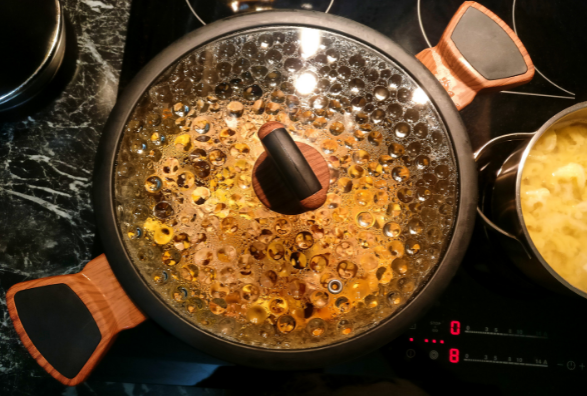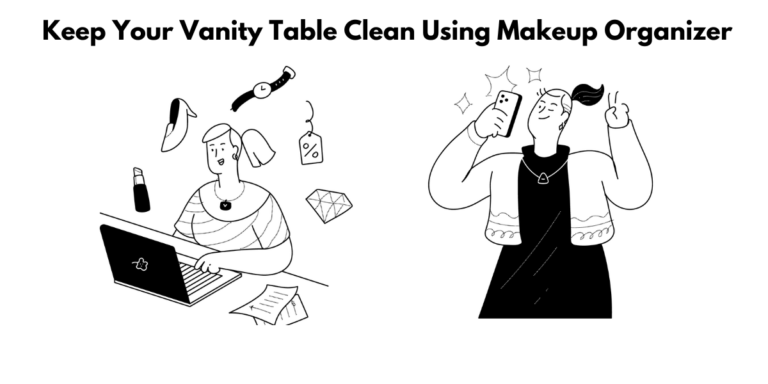How to Maintain Your Nonstick Pan
One of the most important things to consider when using your nonstick pan is how you maintain it. There are a lot of tips, tricks, and rules that go into taking care of your cookware so that it can last for ages. The following set gives some ideas on what works best with different types and common mistakes people make while cooking in them.
What is nonstick cookware?
Nonstick cookware can be a convenient and safe option for your kitchen. There are nontoxic compounds in these pans that greatly reduce cancer risk, but overheating leads to increased risks. High temperatures release compounds into the air that are linked to some cancers. Proper care is necessary when using any nonstick pan, including storing it after use and cleaning it carefully with soap or detergent.
It is important to maintain your cooking pan because it may pose risks for you and your family. When washing the pan, use soap or detergent with warm water to avoid damaging its surface and to help prevent scratching. When storing, avoid stacking heavy items on top of the pan and keep them dry so that moisture seeps into the material.
Nonstick cookware is a popular home item widely used in kitchens. It’s affordable, and features such as the PTFE surface allow for quick cooking of foods without using oil or other fats. As its popularity grew, it became more important to know how to properly care for your nonstick pan so you can use them longer with minimal wear and tear.
The best way to maintain your nonstick pans is by spraying a light coat of vegetable oil on the surface before use. This will keep the pans from getting scratched, corroded and make them last longer.
Nonstick cookware is a popular item that has both pros and cons. It’s well known for the three-layer protective coating, silicone grip for comfortable cooking, and 19 percent more space to accommodate larger meals. The downside of nonstick pans is their inability to get them dirty cleanly without scratching them or putting creases on the surface over time.
Nonstick cookware is popular because it’s safer to use than other cooking pans but not the best. If a nonstick pan gets too hot or stays on for an extended period, it can start chipping off pieces and eventually turn into a resin-like substance that will stick to food. This happens when you don’t clean your nonstick pans properly after each use, which makes them difficult and dangerous to scrub off later in life.
If you want to avoid this, it’s important to maintain your nonstick pan properly. This includes using a damp cloth or sponge on the bottom of the pan when you’re not cooking and adding oil before every use so that food doesn’t stick as much.

How to maintain your nonstick cookware
A nonstick pan can be an essential tool in your kitchen. But it is not without its drawbacks and requires regular maintenance to keep the surface working. If you know-how, however, a nonstick pan can be easily maintained.
This cookware is aluminum with an anodized surface and a nonstick finish. It’s perfect for medium or low-heat cooking, but the temperatures can reach high temps due to its sturdy lids.
You should avoid using harsh cleaners such as steel wool pads because they will scratch up the coating on your pan. Instead, use a soft sponge or cloth along with mild dish soap and water to clean it without scratching it up too much.
Trying to care for your nonstick cookware is not as easy as it seems. It’s important that you know how to maintain the pan to last a long time and work properly.
Nonstick cookware is a must for every kitchen. It’s easy to maintain, and it has several advantages over other types of cookware, such as ease of use with the comfortable handle design that features solid stainless steel handles. The pan can withstand high temperatures up to 600 F, so you don’t have to worry about burning your food or scorching the surface if needed.
Nonstick cookware is a great option for reducing oil and grease. Non toxic pans allow food to release easily, while the aluminum base aids in even cooking. It also provides heat distribution with silicone handles that are oven safe up to 400 degrees Fahrenheit or 200 degrees Celsius, making it an excellent choice for all kitchens, from home chefs preparing meals on their stovetops and metal grills outside at picnics too!
The pans’ mid-weight is ideal for cooking small meals, and the silicone-grip handles stay cool.
Maintaining nonstick cookware is not hard to do, but it does require some attention and care. You need to take your time and be a little more vigilant to ensure that your cookware survives for a long time.
Preheat your pan properly before use
When using a nonstick pan, it is important to preheat the pan before use. Preheating your cookware for 5 minutes on high heat will help ensure that your food comes out perfectly every time.
Preheating your pan before cooking ensures that the eggs will not stick to the bottom. This prevents scrambled eggs from becoming desiccated egg nuggets and omelets from sticking when finished.
Before using your nonstick cookware, it’s important to preheat the pan properly. It should be heated to a lower temperature for about 15 minutes before cooking anything else in it. When frying eggs or making frittatas, make sure that you’re not over-frying them and use olive oil, so they don’t stick to the pan. For stovetop cooking, ensure that the heat is low enough and check with the manufacturer’s website if unsure how much time needs to pass before cooking.
Proper storage
The best way to store nonstick pans is in a wooden or plastic container. Nonstick cookware should not be placed on metal, as it can scratch and dull the pot’s surface. If stainless steel pots are used, they should not contact any other metal objects, including knives and forks.
When storing pans, it is important to find a way that the bottom of the pan will not damage your nonstick surface. One option would be using baking paper or parchment as an underlayer before placing them on top of each other.
When storing a nonstick pan, use a trivet or paper towel to protect the surface and avoid scratching it.
Avoid thermal shock
When cooking with nonstick cookware, it is important to avoid thermal shock. This means that when you heat the pan, do not put it in cold water or ice and then place it on the stovetop. Instead, wait until your pans are cool enough before washing them.
To avoid overheating and warping, it is best to use a pot that has a lid. This prevents heat from escaping when the pot is removed from high heat.
When a product is exposed to high temperatures, it can lead to warping or peeling. This will cause food to stick and release harmful substances that humans and pets could ingest.
Avoid metal utensils
Use a cloth towel or thin plastic wrap to avoid scratching the nonstick coating on your cookware. Never use metal utensils, such as spoons and spatulas, on nonstick cookware because they can scratch the surface and ruin it.
When cooking, avoid using metal utensils and knives on nonstick surfaces. Even if you’re cutting an apple or a potato with a knife made of stainless steel, it will still scratch the surface.
Wash your pans by hand
You should wash your pans by hand and with metal utensils. Wooden spoons and silicone spatulas are the best tools for stirring, flipping and serving food in nonstick cookware.
Nonstick pans are best used on medium to low heat. If you use the stovetop too high, you can burn yourself and ruin your nonstick properties faster. You should also watch how long it takes to cook not to overcook or wear down nonstick properties prematurely.
There are many different brands of nonstick pans on the market. The best way to find one that suits your needs is to try them out in person. If you see a pan with a nonstick surface that you like, but the size is not right for your stovetop, just ask if they have any other sizes available.
Frequently, when cooking food in a pan or pot with metal utensils, the food sticks and burns to the bottom of the pan. To remedy this situation, fill your aluminum or stainless steel pans with about three inches of water and add one-quarter cup of baking soda before simmering for 10 minutes. Additionally, you must use wooden utensils as opposed to metal ones; otherwise, they could damage your cookware too. Lastly, nonstick pans don’t require any oil or butter to cook.
To get a good sear on your food, you should wash the pan by hand. You can also use cooking sprays, and it might not be as effective because fat is needed for proper searing.

Nonstick pan without Teflon
A nonstick pan without Teflon is an option for a lot of people. There are options available that range from aluminum to ceramic. These are the best induction cookware, and PTFE is not recommended for cooking because it can leach into food, especially acidic or oily foods like tomato sauce.
Nonstick pans require proper care to maintain their performance and durability over time.
Nonstick pans are preferable to Teflon because they are easier to clean and do not leech carcinogens into food. However, if you want a pan that has the same performance as PTFE but is healthier for your family, it’s best you choose ceramic or stainless steel cookware instead of opting for a nonstick pan without PTFE.
A good alternative is a ceramic cookware that does not scratch at high temperatures, like stainless steel cooking pots and utensils. Ceramic cookware, a recommended cookware for the nonstick pan without PTFE, has a low heat conductivity and does not leech carcinogens into food like Teflon.
Ceramic coating
Ceramic pans are made of different materials, the most common being aluminum. Some ceramic nonstick pans use a special coating safe to heat up without leaching chemicals. Other nonstick pans use Teflon, which can be dangerous and wear out quickly. When cooking with your nonstick pan, make sure you don’t place it directly on top of an electric burner or in high-temperature ovens to avoid overheating and damaging your pan.
Anodized aluminum layers over the clay to create a durable, nonstick surface for pots and other kitchenware.
Ceramic coatings are made from silica-based material called sol-gel. Ceramic coating is prone to lose its nonstick ability after a year, while PTFE-coated pans last up to 5 years.
Ceramic is a great material for the nonstick coating of pans. It has a shorter lifespan than PTFE coated pans, but it can still provide high quality and last 7 years on average.
Cast iron coating
Cast iron pans are durable and nonstick. They have a coating that requires less cooking oil than other types of cookware, such as Teflon or stainless steel.
It is a popular coating for cookware because it’s easy to clean and hygienic. People have used it in the past, but recently it has gained popularity with more young cooks.
Cast-iron is an excellent choice for cooking, especially when you want to cook something that requires a lot of heat. One downside is its weight.
Buying guide
When in doubt, buy what you need. This is a question of size and type. If you’re cooking for just one or two people, go with a smaller nonstick pan to save money. On the other hand, if you have a larger family or are preparing food for large groups of guests, then it is best to get one that will accommodate your needs more efficiently.
If on an induction cooktop like those found in most modern kitchens, only purchase induction-compliant pans.
All pans will require some care, but the type of care you need depends on what material your pan is made out of. Cast iron and carbon steel are good for any stovetop, while enamel has to be cleaned by hand washing or put in a dishwasher.
In addition, the handles should be cool to touch and stay cool with an oven mitt or silicone sleeve. This will prevent burns when cooking in your ceramic cookware. A $100 is too much for a single pan, and you don’t need to invest more than that on a single piece of cookware.
If you are looking to buy a nonstick pan, you must ensure the coating has an extended warranty and will not wear off too quickly. Ceramic coatings should last for at least a few years before showing signs of wearing down. Some pans have warranties as long as 10 or 20 years, so always check with each one individually on any specific information about its durability and warranty terms.
Material
When buying a nonstick pan, the first consideration is whether it’s made from stainless steel or aluminum. Stainless steel pans are healthy for cooking and don’t release dangerous fumes.
Aluminum pans have been the most popular option for nonstick cookware because they don’t release toxic fumes and are lightweight. They also contain a coating of ceramic that is mostly made up of aluminum, which makes them safe to use. Cast iron pots work well in high temperatures but weigh more than other copper or stainless steel options.
Oven- and dishwasher-safe
Nonstick pans without Teflon are oven-safe at 350 degrees Fahrenheit. If you cook with high temperatures, it’s important to pay attention to the degree of hotness your pot can withstand. Anodized metal pans are dishwasher-safe and save time and convenience because they can be cleaned in a dishwasher. The surface on a brand-new nonstick pan is the slickest it will ever be before it makes the slow march toward ineffectiveness through use and wears down.
While some cookware is oven- and dishwasher-safe, nonstick cooking spray will void the warranty.
Size
If you are looking for a new nonstick pan, consider the size. The 8-inch is a good option because it allows enough room to cook without removing food from the surface of the pan while cooking.
Appearance
When buying a new set of pots and pans, consider the style you want. Pots and pans come in many shapes and sizes, including rectangular, round, square. There are also color options for different designs.
Stainless steel pans are best for neutral tones. They’re nontoxic and easy to clean, too.

Nonstick pan FAQs
We are answering some of the most commonly asked questions about nonstick pans below:
Is nonstick cookware safe?
Nonstick pans are safe for use in the oven, open flame, and metal utensils. However, PTFE starts to decompose at 500ºF and more significantly at 660ºF. The chemicals released from nonstick cookware can cause health problems like kidney damage and thyroid disruption.
Whether or not nonstick cookware is safe depends on what type of pan you are using, how it was made and whether the ceramic coating has PTFE in them. For example, if a Teflon-coated pan is used at high heat for an extended period, then it will become unsafe to use. However, when choosing between different pans with differing coatings, consider these factors: price point and amount that can be used before re-coating.
What material is the nonstick coating made of?
The nonstick coating is made of a mixture of Teflon and other chemicals. The nonstick coating is silicone on the exterior and a synthetic polymer that creates an air gap. Metal utensils can scratch this surface, so use wooden spoons or silicone spatulas when stirring food to prevent scratching and extend the lifespan of your nonstick-coated pan.
What can I use instead of a nonstick pan?
Nonstick pans are easy to use and cook food beautifully, but they can be clean. The best alternative is a well-seasoned cast iron pan that will last for years without needing maintenance.
The toxicity assessment shows that the PFOA-free GenX found in nonstick pans impacts kidney and blood function in lab animals, so it’s not necessarily safe for you or your family if the manufacturer does not disclose this information.
Why do my eggs stick to my nonstick pan?
Eggs are a natural adhesive and will stick to most surfaces. The eggs have likely been cooked too long, and the surface is not hot enough to make them slide off.
There are a few reasons why eggs may stick to your nonstick pan. The most likely reason for the egg sticking is that it has been cooked too quickly, or there is insufficient oil in your pan.
When should you throw away nonstick pans?
Nonstick pans should be thrown away when they chip, stain, or peel. If the pan is still useable but has visible scratches or dents, then the surface can be treated with nonstick cookware cleaner. Nonstick pans should also be thrown away if they smell bad, as the fumes are dangerous.
How to clean non stick pan?
How to clean burnt non stick pan? Simply fill a pot with water and bring it to a boil. Add a small amount of dish soap and stir in the pan. Allow mixture to sit for about a minute to allow soap to break down the dirt. Scrub the nonstick surface with a scrubber or a wet sponge and rinse your pan clean under warm running water. Dry your pan by using a towel or setting it out to dry.
- Proper Care for Your Kitchenware: How to Maintain Your Nonstick Pan - January 30, 2022
- Everything You Need to Know About Doing Your Dorm Laundry: Laundry bag or hamper? Which dorm laundry basket should you go for? - December 20, 2021
- Home Office Storage Cabinet: A complete guide to help you find the best one for your specific needs - July 12, 2021




